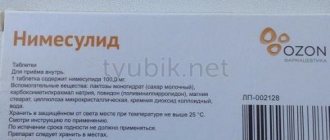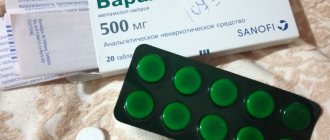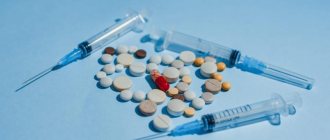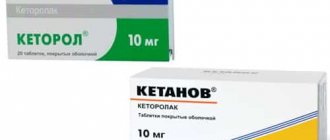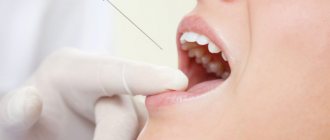Nimesil for toothache is considered one of the most effective remedies that can eliminate this unpleasant symptom. The medicine has anti-inflammatory properties and is classified as a non-steroidal drug. Nimesil for toothache has one important feature: it begins to act within 30 minutes after administration, and the effect lasts about six hours. Despite such high effectiveness, the use of the drug, according to some doctors, can lead to serious consequences.
Indications for use
Nimesil is recommended for use for various pain syndromes. These may be sensations caused by the onset of menstruation, surgery, head diseases and dental problems. The drug is used to eliminate pain arising from the following pathologies:
- Gynecological
- Vascular
- Urological
Nimesil is used for pain, including toothache.
Nimesil demonstrates good effectiveness in eliminating pain caused by dysfunction of the musculoskeletal system. In addition to the main effect that the drug has, it is able to restore body temperature, regardless of the reasons that caused its increase.
Nimesil is often prescribed for toothache due to the fact that the drug has a powerful effect in relieving pain. Dentists resort to this drug because it quickly eliminates discomfort for quite a long time.
The active ingredient of the drug is nimesulide. If there is individual intolerance to individual components of Nimesil, it can be replaced with Nise, Nimica, Nimesulide, Aponil or Prolide, each of which is available in tablet form. There is another analogue called Nemulex. It is produced in powder form.
Instructions for use of powder
To stop inflammatory processes, as well as to eliminate painful sensations, people need to take special medications. Experts often prescribe Nimesil, which is a powder belonging to the category of anti-inflammatory non-steroidal drugs, to patients for the treatment of such diseases.
The drug has a powerful systemic effect, so it can quickly stabilize the condition of patients.
But it has a fairly wide range of side effects and contraindications, so people should use it after receiving medical advice.
Compound
The manufacturer of the medicine uses Nimesulide as an active component in the manufacturing process.
The composition is supplemented with the following excipients:
- citric acid;
- orange flavoring;
- sucrose;
- ketomacrogol;
- maltodextrin.
Release form
The manufacturer packages the light yellow powdery substance in sachets that contain 2 g of medication, which contains 100 mg of the active substance.
The drug is supplied to pharmacy chains in cardboard packages containing 9, 15, 30 laminated bags.
pharmachologic effect
The medication has the following pharmacological effects:
- antipyretic;
- painkillers;
- anti-inflammatory.
After penetration into the human body, the active component begins to have a direct effect directly at the site of inflammation, as well as:
- reduces temperature;
- eliminates pain attacks;
- relieves inflammation;
- has a general strengthening effect;
- eliminates symptoms of colds and fevers.
The active component "Nimesil" is able to relieve the following types of pain:
- dental;
- rheumatic;
- pain that occurs due to the progression of osteoarthritis;
- unknown etiology.
How to breed?
Each patient must use the medication in accordance with the instructions, in which the manufacturer gives his recommendations and indicates how to properly dilute the powder.
The process of preparing a medicinal substance is quite simple:
- Boiling water in a volume of 100 ml is poured into a glass.
- Powder from one sachet is poured into water and mixed well.
- After all the granules have dissolved and the liquid has cooled slightly, the patient should drink it in one go.
- If the prepared solution cannot be drunk, then it cannot be stored either at room temperature or in the refrigerator. The liquid is poured out, and a new dose is prepared before use.
How to use?
Patients from the age of twelve can take the medicinal solution. In this case, specialists should individually determine the daily dosage for adolescents.
Elderly people, as well as patients diagnosed with liver or kidney failure, should take granules with extreme caution.
The manufacturer indicates in the instructions that the powder substance can be mixed into food, but patients must drink a sufficient amount of water after meals.
Instructions for using Nimesil powder for toothache
When toothache occurs, people are ready to take any medication that will help them get rid of unbearable suffering.
They can quickly stabilize the condition with Nimesil, which should be used in accordance with the instructions.
For a one-time pain relief, one sachet will be enough, the contents of which should be diluted in clean hot water. If the discomfort resumes after a while, then the granules should be taken again after 12 hours.
Contraindications
When studying the annotation, people should pay special attention to the section in which the manufacturer indicates all contraindications to the use of the medication.
It is forbidden to use granules for patients who suffer from the following pathologies:
- diabetes mellitus;
- tendency to thrombosis;
- ulcerative lesions;
- hypertension;
- severe renal and hepatic pathologies;
- intestinal and stomach bleeding;
- bronchial asthma;
- individual intolerance to the components of the medication;
- heart failure;
- alcohol addiction.
It is also prohibited to use the powdered substance to patients during pregnancy and breastfeeding.
But, despite the prohibitions, experts in some cases prescribe the drug to both pregnant and lactating women and children, if the risk from using Nimesil is less than the consequences of the disease.
Analogs
Currently, pharmacy chains offer a wide range of tablets and granules that have a pharmacological effect identical to Nimesil.
You can replace this medicine with the following analogues:
- "Nimesulide";
- "Aulin";
- "Nizom";
- "Mesulide";
- "Nimicom";
- "Nimulid";
- Nemulex.
Interaction with other drugs
The annotation indicates this interaction of the powder with other medications:
- Glucocorticosteroids – gastric or intestinal bleeding, ulcerative lesions.
- Antiplatelet drugs – internal bleeding.
- Antihypertensive drugs - their pharmacological effects are weakened.
Side effects
When using a powdered substance, people may experience the following side effects:
- Nausea begins, which is often replaced by vomiting.
- The processes of defecation are disrupted.
- Gastrointestinal bleeding may occur.
- Pressure surges are observed.
- Shortness of breath appears, the pulse quickens.
- Allergic reactions develop, in which skin rashes are observed.
- The skin begins to turn yellow.
- Hepatitis develops.
- Visual disturbances are observed.
- When urinating, patients feel pain.
Storage and release conditions
In pharmacy chains, the drug is sold without a doctor's prescription. People should store the powder at room temperature, in a dry place, out of reach of both children and pets.
Price
One of the main advantages of this medication is its affordability. The cost of one sachet of anti-inflammatory and pain reliever starts at 25 rubles.
Each pharmacy chain independently forms its own pricing policy, which is why the cost indicator can vary and reach 40 rubles.
Best before date
The drug can be used within two years from the date of manufacture. After this period, the medicine should be thrown away.
Source: https://prozubi24.ru/poroshka-nimesil/
Action of Nimesil
Nimesil for toothache, when entering the body, inhibits the formation of prostaglandins. The latter are chemical compounds, the synthesis of which occurs in almost all tissues, including blood vessels. Prostaglandins do not have a direct effect on the course of pain. However, they enhance the effect of compounds that provoke the development of the inflammatory process.
Nimesil is prescribed for toothache caused by:
- Caries
- Pulpitis
- Gum pathologies and other dental ailments
At the same time, the medicine suppresses the development of the inflammatory process. It is important to understand that Nimesil for toothache is a temporary remedy. It is not able to eliminate the disease that caused the discomfort. To eliminate the latter, other measures are necessary.
How to use Nimesil for toothache
Indications for use: acute pain: toothache, bursitis, tendonitis, back pain, joint dislocation or sprain. Nimesil is used for toothache for symptomatic therapy, pain relief and reduction of inflammation at the time of use, does not affect the progression of the disease.
How toothache occurs, how to drink Nimesil
Nimesil against toothache
Of course, dental caries, which occurs for a number of reasons, extracted, broken or chipped teeth, abscess, pulpitis (inflammation) of the tooth nerve, pericoronitis, sinusitis, intense gingivitis and so on, cause unbearable pain.
Treatment depends on the cause of the pain and the severity of the injury. However, regardless of the cause, pain medication is needed to relieve the pain.
For example, Nimesil powder for toothache will help stop the unbearable sensations and temporarily reduce the inflammatory process.
The recommended dose is one sachet (100 mg). Take symptomatically. If you have a toothache, take it once for it, there is no sign of discomfort, then you don’t need to take it. Nimesil toothache powder can be used once or as a course, but not more than 15 days. It is advisable to use for a shorter time to avoid side effects.
If toothache is constantly felt, take twice a day after meals. Pour the contents of the sachet into a glass of still water. Stir with a spoon until dissolved. Drink the suspension as soon as it is ready.
How to take nimesil for toothache
Taking nimesil, toothache will go away for a while, but you need to take into account the absolute contraindications of the drug.
Contraindications:
- pathologies of the stomach (ulcer) and duodenum in acute stages, violation of the integrity of the gastrointestinal tract;
- exacerbation of inflammatory diseases of the digestive system;
- heart pathologies;
- severe disturbances in the hemostasis system;
- liver failure or any active liver disease;
- renal failure;
- bleeding;
- hepatotoxic, allergic reactions to the painkiller nimesil.
In addition to contraindications, there is also a set of symptoms from an overdose: loss of strength, vomiting, bleeding in the gastrointestinal tract, etc...
Nimesil method of use for toothache
Basically, the pharmacological effect of the drug for toothache is pain relief by reducing inflammation . This remedy is the best pain reliever for toothache.
It is the most commonly used anti-inflammatory and fever reducer. Anesthetic powder nimesil is used for toothache after removal of a chewing unit.
It acts on inflammation and prevents the transmission of pain messages to the brain.
Works well for toothache. Taking nimesil for toothache has the only problem - the pain decreases only for a short period of time.
Nimesil for toothache
One Nimesil powder contains 100 mg of Nimesulide. You can take no more than 2 powders per day. Diluted in 100 ml of water. Children under 12 years of age are not recommended to use the powder. There is no need to take the medicine on an empty stomach. Main action: suppression of any kind of pain. Before drinking nimesil for toothache, you need to study the instructions with contraindications.
How the drug works
The effect of reducing toothache and any other pain from Nimesil is achieved by suppressing enzymes responsible for transmitting the production of substances that cause us to feel discomfort.
The potential effect of transmitting impulses along the nerves is reduced. Swelling of the soft structures around the tooth is eliminated, inflammation is reduced.
But before using nimesil for toothache, you need to pay attention to limiting use for certain diseases and in pediatrics.
Why should you visit the dentist after the medication stops working?
Caries causes extremely sensitive pain in the central part of the tooth, the pulp. The sensitive area becomes inflamed for various reasons: tooth decay, a blow to the teeth, or a gum infection.
Inside the soft zones that hold the root, a focus of inflammation may also occur due to infection in the canals without the nerve.
It is not possible to independently determine the cause and cure toothache with Nimesil.
Inflammation of the tissues around the tooth, how to take nimesil
Even if nimesil painkillers help, the effect is temporary.
Antibiotics may be needed if it is an infection, or much stronger prescription medications for severe pain. A quick consultation with a dentist will help you understand any problem in the oral cavity.
Nimesil powder for toothache lasts 6 hours. Has an analgesic and anti-inflammatory effect. Therapeutic effect: treatment of acute pain and reduction of the inflammatory process.
See also:
Source: https://bolitzyb16118.info/%D0%BA%D0%B0%D0%BA-%D0%BF%D1%80%D0%B8%D0%BC%D0%B5%D0%BD%D1% 8F%D1%82%D1%8C-%D0%BD%D0%B8%D0%BC%D0%B5%D1%81%D0%B8%D0%BB-%D0%BF%D1%80%D0% B8-%D0%B7%D1%83%D0%B1%D0%BD%D0%BE%D0%B9-%D0%B1%D0%BE%D0%BB%D0%B8/lechenie-zubov/
Method of administration
Nimesil is used for tooth pain only after consultation with a doctor and with his direct participation. One of the main advantages that the medicine has is its release form.
The suspension is prepared from powder according to the instructions
Nimesil is produced in the form of a powder intended for the preparation of a suspension. This solution is quickly absorbed, resulting in relief within 30 minutes. During this period, the concentration of the active substance reaches 50% of the maximum possible.
Before you start using Nimesil, it is recommended that you read the attached instructions. The drug is approved for use subject to a number of conditions:
- The patient's age is over 12 years
- The product is taken only after meals
- The prepared solution is not intended for long-term storage
- The powder is dissolved in half a glass of warm water
The drug is taken daily no more than twice a day. At least 12 hours must pass between each dose.
Nimesil - powder for toothache
September 27, 2020 Last revised: December 21, 2020 Medicines
Toothache is so unbearable that a person is looking for a reliable pain reliever that will help temporarily numb the pain.
One of these medicines for toothache is Nimesil. It relieves pain and stops inflammatory processes in soft and bone tissues.
In our article we will look at how to take Nimesil for toothache, its positive and negative aspects of its effects, as well as analogues.
Nimesil for toothache: method of application
The medicine is available in tablet and powder form. The powder, compared to tablets, is instantly absorbed into the gastric mucosa without having an aggressive effect on it. How to take Nimesil for toothache: pour the powder into a cup and dilute with 100 ml of water. When the powder is completely dissolved, drink the finished suspension.
After what interval can the suspension be repeated? The interval between doses of the drug is at least 12 hours. It is better to take the medicine after meals; increasing the dosage is prohibited. Some patients strive to kill the pain “for sure” and try to take a large dose of the drug: this will not help.
Important! You cannot store unused suspension “in reserve” in the refrigerator: it should be poured out.
How long does it take for toothache powder Nimesil to take effect? After about 20 minutes, the patient begins to feel relief: at this time, the concentration of the active agent of the drug reaches 50%.
A distinctive feature of Nimesil is the reduction of high temperature, so it can be taken as an antipyretic for any form of disease. However, if a toothache occurs, Nimesil can only relieve the pain, but not cure the disease. Therefore, a visit to the dental office will still have to be made, even if the pain completely disappears.
Contraindications
Nimesil has a fairly large list of contraindications. Therefore, before using the medicine, it is recommended that you familiarize yourself with this list. According to the instructions for the drug, it is contraindicated in the following cases:
- There is hypersensitivity to the active substance (nimesulide)
- Diagnosed with rhinitis, urticaria
- Signs characteristic of bronchospasm are observed
- Have renal and/or heart failure
- The patient is taking other medications that are highly toxic
- Inflammation in the intestines
- Stomach ulcer, bleeding, low blood clotting were diagnosed
- Pregnancy and lactation
- Age up to 12 years
Nimesil is also contraindicated for use in combination with alcohol and drugs.
Elderly patients are advised to take the drug with caution, as it belongs to the NSAID group of drugs.
Nimesulide, Nimesil, Nimulid - are there any differences?
The question of whether there is a difference between the presented drugs is very relevant.
In general, these drugs are direct analogues. They have the same active ingredient - Nimesulide.
The differences lie solely in the release form and secondary components.
The drug Nimesil is available exclusively in powder form.
Nimulid can be purchased in gel form, but it is also available in syrup form. This medicine contains a low dose of Nimesulide, which is why it can be prescribed in pediatrics.
Which product should I choose?
To eliminate toothache, it is recommended to use Nimesulide tablets or Nimesil powder. They have the same concentration of the active ingredient - 100 mg.
Nimulid syrup can be given to children under 12 years of age, but in childhood many other painkillers that are safer for the child’s body can be used.
Dangers of taking Nimesil
Many patients confirm the high effectiveness of Nimesil for relieving toothache. However, according to several studies conducted on this medicine, it can cause a number of negative effects caused by toxicological effects on the kidneys and liver. Therefore, the sale of Nimesil was banned in the United States, and in European countries the drug is sold with a mark prohibiting its administration to children.
Data from various studies have shown that negative consequences from the action of the drug occur only if the specified conditions of administration are not observed and if the prescribed dosage is exceeded.
When purchasing the drug, you should be advised about the specifics of use and contraindications of Nimesil.
Dentists recommend taking Nimesil to relieve tooth pain only in cases where other medications that have a safe effect on the body are not able to eliminate the pain. In addition, the drug is contraindicated for long-term use, since the liver is subjected to severe stress.
During studies of the drug's effect, no other negative effects were identified. Only a number of subjects refused to continue taking the medication due to the fact that they were diagnosed with disorders of the digestive system. Moreover, cases of severe liver damage have not yet been reported in medical practice.
Dental flux - how to quickly remove swelling and swelling on the gums, what remedies help?
A fairly large number of people know what dental flux is, but they find it difficult to quickly remove the tumor at home.
After all, gum swelling can cause inflammation. Then the pain will spread to the entire oral cavity, and swelling will appear. A person feels weak, and the body temperature often rises. This pathology is called periostitis.
With its occurrence, the periosteum of the jaw is affected, and the process also occurs on the gums.
How long does the swelling last?
The swelling of the gums and cheeks caused by periostitis during the normal course of the disease, not a severe form, goes away in a couple of days. This requires competent, timely therapy. Very rarely the process drags on for a week. A common question becomes: when does the swelling go down if a tooth is removed? If you follow all medical recommendations, it goes away in a couple of days.
The swelling resulting from the removal of the masticatory organ subsides as the wound heals. Often antibiotics and rinses are used for this. This is due to the difficulty of predicting the recovery period of the mucosa. Removal of swelling depends on the following conditions:
- form of periostitis (chronic or acute),
- complexity of the pathology,
- reasons for development,
- timeliness, method of therapy used.
The lack of treatment for flux causes the development of complications, the treatment of which is delayed for an unknown period of time. If the lymph nodes are affected by flux, recovery may take up to seven days.
Causes
The etiology of the development of the pathological process is infectious in nature.
There are a number of factors leading to inflammation of the periosteum:
- Caries - in the absence of timely treatment, bacteria penetrate into the peri-root space. They begin to have a destructive effect on the bone structure.
- The chronic form of the infectious process is the presence of a source of constant inflammation in the sinuses, ENT organs and nasal cavity.
- Trauma, for example, a fracture of the crown or root of a tooth, will create an open path for the spread of pathogenic microflora from the oral cavity into the internal structures of the jaw.
- Marginal periodontitis is an inflammation that affects the marginal gum.
- Stomatitis is a pathology in which the integrity of the mucous membranes and soft tissues of the oral cavity is disrupted.
- A cyst is a suppuration of the peri-root sac, which often leads to inflammation.
Another reason is poor quality treatment. So, if the technique of root canal treatment and filling is violated, the infection can go deeper.
How to rinse your mouth?
The procedure will help reduce symptoms and eliminate pain. The main thing is to strictly follow the basic principle of rinsing - regularity (every half hour). Dentists prescribe the following medications:
- Rotokan is made on the basis of plant components. Has a disinfecting effect, eliminating inflammation,
- Chlorhexidine – antimicrobial effect,
- Miramistin – suppresses pathogenic bacteria,
- Malovit – relieves swelling. For rinsing, 7 drops of the product are diluted in 200 g of water,
- Betadine – prevents the formation of suppuration, promotes healing.
Among folk remedies, soda-salt solution is widely used. To prepare, you need to dissolve 1 tsp. soda and salt in 200 ml of warm water. In addition, rinsing with herbal decoctions has significant benefits. They remove pathogenic microbes and strengthen the immune system.
Rinses for periostitis include recipes:
- sage herb, green tea without additives, 1 tsp each. Brew with boiling water, let it brew. Adding a pinch of salt will help enhance the effectiveness. Use a warm solution for rinsing,
- Dilute calendula tincture with alcohol in boiled water. Carry out the procedure at least 6 times a day,
- lemon balm pour 0.5 cups with a liter of boiling water, close the lid tightly, cover with a towel. Leave for 60 minutes. Rinse every 2 hours. Do you feel nervous before visiting the dentist? Yes No
- herbs collected 10 g each: oak bark, calamus root, sage leaves, nettle, pour a liter of boiling water, leave for 2 hours, strain, cool. Use the resulting composition for rinsing every two hours until the pain disappears,
- sage 2 tbsp. l. pour 500 ml of boiling water, keep in a water bath for 50 minutes, let cool, rinse your mouth three times an hour,
- Combine lemon balm, oak bark, and sage in equal parts and pour boiling water over the mixture. Allow to cool and rinse up to 10 times throughout the day.
There are many effective folk methods. They will relieve swelling, however, it should be remembered that they will not be able to eliminate the problem. It is best to contact a specialist.
Is it possible to get rid of gumboil yourself and how to do it quickly?
Flux (periostitis) is an extremely unpleasant inflammation of the oral cavity and one of the most common dental diseases.
The causes of flux can be a variety of factors: a carious tooth, any infection, mechanical trauma to the gums, or an inflammatory process between the gum and tooth. For various reasons, swollen cheeks and gums bring constant discomfort and pain.
Sometimes flux occurs with high fever and weakness, and without timely treatment can lead to serious complications.
If you don’t have the opportunity or time to see a dentist, you can treat gumboil at home to get rid of the tumor and relieve fever.
Such help is temporary, but it is useful to use. This is not a reason to cancel a further visit to the doctor. The use of traditional medicine recipes helps to remove swelling, relieve pain and get rid of inflammation.
Decoctions for oral administration
Internal use of herbal decoctions strengthens the body's immune system and enhances the effect of other remedies. You should choose your herbs wisely - they should not cause an allergic reaction. Traditional medicine offers the following recipes against dental flux:
- 1 tbsp. l. a mixture of equal proportions of plantain and knotweed, pour 500 ml of boiling water, put on low heat, holding for 15 minutes. Drink half a glass in the morning and evening,
- Drinking a mixture of green tea and sage three times a day provides a calming, tonic, antibacterial effect,
- Parsley infusion will help relieve swelling from the cheeks. Grind the plant, pour 0.5 liters of boiling water, leave overnight in a thermos, strain, add lemon juice. Drink the infusion in three doses throughout the day.
Remember that taking decoctions will relieve swelling and will not provide complete treatment.
Mouth rinse
Flux is a rather unpleasant oral disease that can occur at the most unexpected moment for any reason: untreated caries, a poorly filled tooth, food stuck under a crown that has been there for a long time, mechanical trauma to the teeth and gums, vitamin deficiency and much more.
Most often, the gumboil is “visible” immediately: a swollen cheek, painful and red gums, sometimes you can see a purulent ball on it.
You can also observe an increase in body temperature, general weakness, sweating, enlarged lymph nodes in the neck and many other symptoms characteristic of this disease.
Only a doctor can completely cure gumboil using specially selected medications or by physically “removing” the problem - opening the tooth and removing pus and infected parts of the tooth, disinfecting the sore spot, etc.
Since flux is a nuisance that can arise for a variety of reasons, its treatment can be very different.
Depending on the cause of the problem: inflammation, infection, mechanical injury, you should choose the type of rinse.
So, with flux, you can use the following recipes for mouth rinsing:
- camomile tea. It will quickly disinfect, soothe, and relieve inflammation. It is ideal to rinse the mouth with this infusion if the appearance of flux is infectious. You can prepare a solution either from fresh flowers or from dried ones, sold in pharmacies. Usually 100 grams of chamomile is poured into two glasses of boiling water and left for 20-25 minutes if we are talking about dried herbs. Fresh flowers should be boiled for 3-5 minutes, and then left to infuse under the lid for 15-20 minutes;
- sage, mint, lemon balm, calendula - the decoction is prepared in the same way as chamomile, has an anti-inflammatory and healing effect. You can use each herb separately or prepare a medicinal mixture by mixing them in equal proportions;
- Oak bark. Quickly heals even deep wounds, reduces bleeding, reduces swelling, and relieves inflammation. Prepare strictly according to the instructions on the package;
- saline solution Quickly removes harmful substances from the gums, relieves pain, and has a disinfectant effect. The solution is prepared as follows: add a level teaspoon of salt to a glass of warm boiled water, then stir thoroughly until completely dissolved. Salt can be used both table and sea salt. It is best to use the resulting solution immediately in one application, moreover, in a warm, but not hot form;
- soda solution. It is prepared by analogy with salt, has the same effect, only it also heals existing wounds. Ideal for post-traumatic inflammation;
- Chlorhyxedine is a medical solution that is sold in pharmacies; 0.05% is used for rinsing. Has a disinfecting and healing effect.
Read also: How to relieve tooth sensitivity with folk remedies
Using compresses
Due to the fact that flux is an inflammation, the compresses used should be at room temperature or cooled. Exposure to heat is contraindicated. Properly selected therapy will ensure prompt elimination of edema.
Source: https://kcdc.ru/desny/flyus-shcheka-opuhla.html
Possible side effects
Nimesil in some cases provokes the appearance of many side effects, manifested in the form of:
- Attacks of headaches and dizziness
- Problems with stool
- Nausea and vomiting
- Increased sweating
- Allergic reaction in the form of skin rashes
- Anemia
- Decreased vision
- Increased blood pressure
- Increased nervousness
- Insomnia
- Shortness of breath
- Stomatitis and hepatitis
- Urinary retention
Basically, the negative consequences that occur when taking Nimesil are associated with the functioning of the gastrointestinal tract. Side effects manifest themselves in the form of diarrhea, constipation, pain localized in the abdomen.
Composition and effect of the powder
Nimesil is a non-steroidal anti-inflammatory drug.
Available in powder form for preparing a suspension.
Has a complex effect on the body:
- relieves pain;
- helps reduce temperature;
- blocks the development of the inflammatory reaction.
The therapeutic effect of the drug is due to the properties of its active component - nimesulide. This substance inhibits the synthesis of the enzyme COX-2 (cyclooxygenase), as a result of which the production of prostaglandins responsible for the development of inflammation in the pathological focus is blocked.
Excipients in Nimesil include ketomacrogol, sucrose and maltodextrin. To improve the taste of the drug, anhydrous citric acid and orange flavor are used.
The drug is well absorbed from the gastrointestinal tract without having an aggressive effect on the mucous membranes. The analgesic effect begins to appear within 30 minutes after taking the suspension. The maximum concentration of nimesulide in blood plasma is achieved after 2-3 hours.
Analogs
For excruciating toothache, the drug “Nimesil” is an ideal way to provide emergency assistance to the patient. But the German medicine has a rather high cost (from 600 rubles) and is not available to everyone. What can replace Nimesil? There is an extensive list of drugs based on nimesulide, which have a similar effect on the patient’s body.
The list of analogues is as follows: “Aulin”; "Mesulide"; "Nise"; "Aponil"; "Novolid"; "Nimulid"; "Mesulide"; "Flolide"; Nemulex.
However, this is not a complete list of Nimesil analogues. Dozens of products are produced based on its active ingredient, the availability of which can be found at the pharmacy. It is not advisable to purchase a drug substitute on your own, because the concentration of nimesulide in each medicine is different, and only a doctor can choose the correct dosage.
You can find all analogues in pharmacies. Often, after using generics, patients talk about the complete identity of Nimesil and are satisfied. The main advantage of analogs is a much lower cost with the same method of operation.
What is more effective - Nimesil or its analogues? The original differs from substitutes in the composition of auxiliary components (preservatives, flavorings) and the specifics of production. The increase in the cost of the product is determined by the issuing country, the equipment used, customs duties during transportation across the border, investments of financial resources in development and other circumstances. As a result, with the same therapeutic effect, there are significant differences in price.
It is important to remember that expensive products have not only analogues, but also fakes. The latter are much cheaper than the original, but they do not contain the necessary healing components. In order not to buy an ineffective counterfeit instead of a real drug, you need to contact trusted pharmacies. A reputable pharmaceutical establishment may slightly increase the price of a medicine, but counterfeits will never be sold here.
